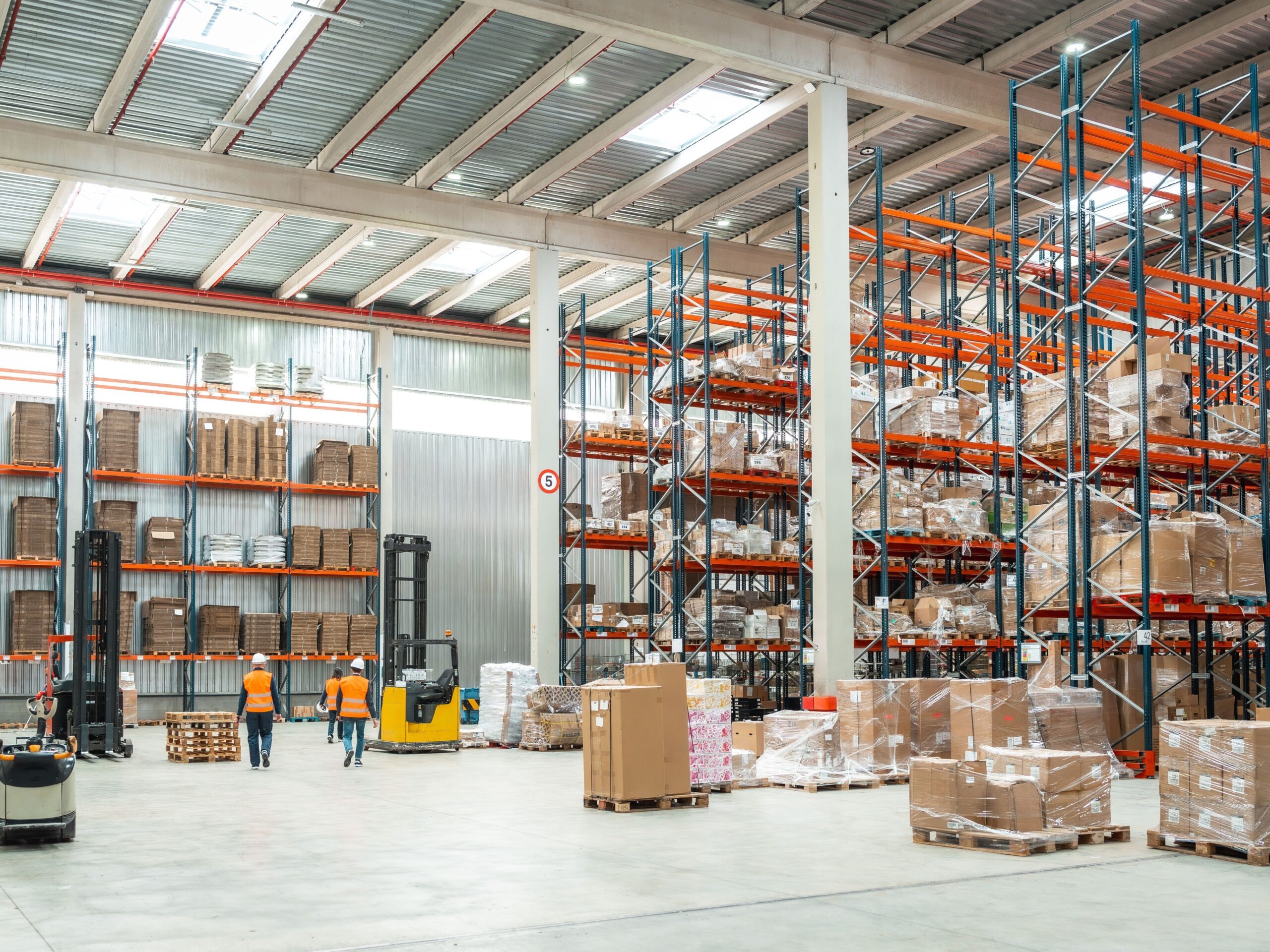What We’ll Unpack in This Article (TL;TD)
The way leaders approach inventory replenishment plays a key role in everything from profitability to the flow of day-to-day operations. Get it right, and you keep customers happy, shelves full, and margins protected. Get it wrong, and you’re stuck with costly inventory distortion.
To master inventory replenishment, you need to:
- Be able to answer “what is inventory replenishment?” in the context of 2025.
- Build a strong strategy, which includes accurate demand forecasts, SKU segmentation, and artificial intelligence.
- Use emerging best practices, like adopting comprehensive inventory management software and monitoring supplier performance.
This article helps you understand how to excel at inventory replenishment today.
For leaders in inventory-based businesses, the way you approach your stock plays a key role in everything from profitability to the flow of day-to-day operations. Get it wrong, and you’re stuck with costly overstocks or stockouts. Get it right, and you keep your shelves full, customers happy, and margins protected. That’s where inventory replenishment comes into the picture.
What is inventory replenishment in 2025, and why should business leaders care? In today’s supply chain, replenishment looks very different than it did even just a few short years ago. Factors like long lead times, unpredictable (and rapid) demand shifts, and global tariffs are pushing distributors and manufacturers to rethink their approach. At the same time, customers expect near-perfect service levels, leaving little room for error.
This article explores what effective inventory replenishment looks like today, and the strategies and tools you need to do it in a way that maximizes profitability.
What is Inventory Replenishment? 2025 Edition
To fully master inventory replenishment, you need to start with the basics: what is inventory replenishment, and how has it changed?
At its core, inventory replenishment is simply the repeatable process of restoring stock to the items that you sell. It sits at the intersection of demand forecasting, supplier performance, and forecasting, and is a pre-warehouse discipline focused on preventing both shortages and bloated inventory.
Inventory replenishment is critical for both margins and customer satisfaction. Industry research shows that stockouts alone cost retailers more than $1 trillion annually, and that when products are unavailable, consumers will often not make purchases altogether.
While inventory replenishment is critical, it needs to be precise: you don’t want to just order items at random, based on your gut feeling that they’ll sell. To maximize profitability, keep operations running smoothly, and maintain customer satisfaction, you want to order the right items, in the right quantities, when you actually need them. This requires a data-driven approach to replenishment, which leans on forecasts, analytics, and supplier insights to inform ordering decisions.
A strong inventory replenishment strategy includes elements like:
- Accurate demand forecasts which anticipate how much of each product customers will buy, and when.
- SKU segmentation (such as ABC analysis), which classifies items based on how valuable they are to your business.
- Artificial intelligence (AI), which drives accuracy, visibility, and predictions, and informs better inventory decision-making.
- Supplier performance monitoring tools, so you can transparently monitor data like lead times and on-time delivery rates.
- Balanced safety stock policies, which ensure you have enough extra inventory on-hand to minimize the risk of stockouts, while avoiding too much excess.
Done well, inventory replenishment strategies keep your shelves full where and when it matters, while trimming excess.
Why Are New Inventory Replenishment Tactics Essential Today?
If you’re part of a business that involves stock, it’s likely you have inventory replenishment policies in place – whether they’re fairly simple or very sophisticated. Either way, it’s likely you need to upgrade your current strategies, in order to meet today’s market conditions and consumer needs.
Here’s why, in 2025, teams need replenishment that’s faster, smarter, more transparent, and grounded in real-time data:
1. Volatility is here to stay
Today’s market is anything but predictable. Promotions, channel shifts, and even social media-fueled shopping trends mean that you can’t just order SKUs based on hunches, or even past performance alone. If your process can’t detect anomalies and predict for real-world conditions, you risk either over-ordering or under-ordering. Emerging replenishment strategies use AI-powered forecasts, sophisticated inventory planning tools, and nimble workflows to ensure your stock levels are accurate, even in increasingly unpredictable conditions.
2. Lead times are longer (and varied)
While lead times have improved in recent years, in many cases, they still remain higher than their pre-pandemic levels. That’s not all – lead times are also less predictable than in the past: global supply disruptions can erupt in a moment, delaying shipments from around the world. With long, variable lead times, businesses need to have strong, visible replenishment strategies, to avoid backlogs, delays, stockouts, and rush orders.
3. ERPs aren’t enough on their own
ERP systems are useful for inventory-based businesses, capturing key data and insights. However, many of their features are often a “mile wide and inch deep,” offering features that are helpful, but not nuanced enough for the modern supply chain. For example, while they might generate straightforward, broad demand forecasts, ERPs typically lack custom forecasting at a granular view. Leaders need to adopt new tactics and technologies to fill these gaps.
4. AI has moved from a buzzword to a key lever
Artificial intelligence is revolutionizing inventory management, and if you’re not updating your policies and tools, you risk getting left behind. How exactly? AI is responsible for more accurate forecasts, reduced safety stock requirements, and at-a-glance data takeaways (like cost of goods sold and carrying costs). And we’re just getting started: there are also cutting-edge tools that are just being released, such as zero-demand forecasts that predict when an item is going to drop to zero sales, so you can stop ordering products before they become obsolete. If you’re using outdated algorithms or manual systems, you won’t be able to keep up.
As you can see, the question “What is inventory replenishment?” has a new answer in the modern supply chain. Updating your tactics, processes, and tools is the difference between tying up cash in the wrong SKUs, and consistently hitting service levels.
What Are the Best Practices for Replenishment in 2025?
If you want to update your inventory management practices to maximize profitability and inventory outcomes, here are top performance drivers to keep in mind:
1. Adopt the right inventory software
As you can likely imagine, the inventory management tools you choose play a central role in your replenishment strategies. By choosing the right solution, you can easily generate highly accurate demand forecasts, monitor supplier activity, keep safety stock levels low, and improve your ordering policies. Look for a tool that supplements your ERP, includes AI-powered features, and gives you granular control over your forecasts.
2. Segment SKUs and set intentional service targets
Not all items deserve the same investment. With that in mind, tie service objectives to item importance, using systems like ABC analysis to focus on items that are most valuable to your business. Then, bake service targets into safety stock calculations, to keep levels as low as possible.
3. Make supplier reliability a priority
Suppliers play a central role in your business’ ability to replenish inventory predictably and affordably. Monitor on-time rates and lead time trends to inform decisions about which suppliers you partner with. If a supplier is consistently late, you might want to choose another option.
4. Monitor real-world trends
Your business doesn’t exist in a vacuum, and you need to take real-world volatility into account. Tariff impacts, freight costs, and geopolitical conflicts all impact your customers and suppliers, and need to be factored into your replenishment decisions. For example, if a particular supplier is impacted by trade disruptions, you might choose to use an alternative one.
These practices can help transform inventory replenishment from a fire drill into a proactive, predictable system that helps you reduce excess inventory, predict customer demand, and ultimately, allows your business to grow.
StockIQ: Helping You Master Inventory Replenishment in 2025 and Beyond
Unlocking business success requires more than being able to answer the question “What is inventory replenishment.” Leaders need to know how to build a strong replenishment strategy, understand modern market conditions, meet rising consumer demands, and deploy cutting-edge tech. If you’re ready to transform your inventory replenishment strategy from a liability to an asset that drives growth, let’s talk.
We’re StockIQ, a supply chain planning suite built for businesses like yours that uses advanced technologies to help enhance the way you approach inventory replenishment. With our AI-powered demand forecast, in-depth inventory analytics, supplier performance monitoring tools, and granular controls, you’ll gain in-depth visibility into your operations, from end-to-end.
Are you interested in learning how StockIQs supply chain planning suite can help drive better inventory replenishment? Contact us today or request a StockIQ demo.

